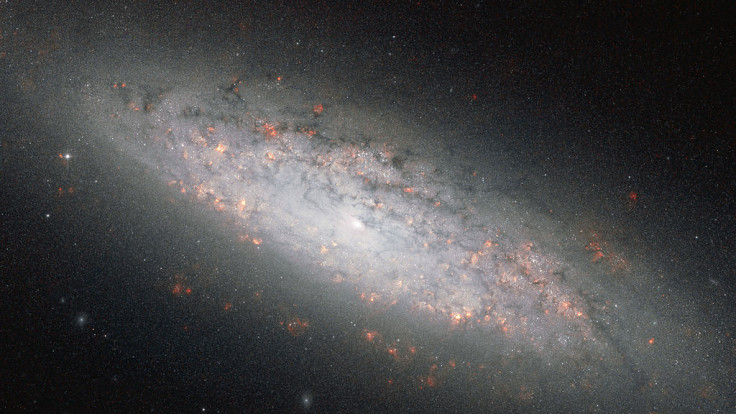Were Dinosaurs Killed by Disc of Dark Matter?

Their demise has been blamed on mice, global warming and – according to cartoonist Gary Larson – smoking. Now two theoretical physicists in the USA have put forward a more unusual theory for the extinction of dinosaurs some 65 million years ago: a vast disc of dark matter.
According to Lisa Randall and Matthew Reece, of Harvard University, Massachusetts, the Milky Way – the galaxy our sun shares with 100-400 billion other stars – contains a "disc" of the strange phenomenon known as dark matter.
The physicists believe that this disc of dark matter is sandwiched between the upper and lower sides of the galaxy like a huge ham sandwich. As the sun revolves around the outer edge of the galaxy, due to its meandering path, every 35 million years it passes through this disc, triggering an increase in asteroid showers.
Little is known about dark matter, but it has long been thought its force was too weak to form a disc. Then the Fermi Gamma-ray Space Telescope received dark-matter-like signals from the galaxy's centre which seemed to be explained by another theory: the existence of 'dissipative dark matter' which acts differently and has the force to form a vast disc some 35 light years thick.

Randall and Reece examined meteor craters with a diameter of more than 20 kilometres which have struck the earth over the last 350 years, finding the possibility they occurred within the 35 million year cycle was around three times more common than from other periods.
The theory that a huge asteroid caused the dinosaur's extinction has long been the most popular one, but this new theory about what triggered the collision is controversial. Coryn Bailer-Jones, of the Max Planck Institute for Astronomy in Heidelberg, says the three-to-one possibility that dark matter was responsible for an increased frequency in meteorites was a probability "you normally wouldn't bother to mention".
What remains unclear is whether the sun passed through the dark matter disc since the extinction of the dinosaurs 65 million years ago. Is there a possibility we could soon pass through it again? The European Space Agency's Gaia Mission will soon attempt to confirm or deny the existence of this dark mass disc at the centre of the galaxy. If it is discovered that no dark matter is present, this latest theory will be dead and buried.
However, Randall defended his unusual theory: "This is trying to turn this somewhat crazy idea into science, by saying we will make predictions based on it. We're not saying we think it's 100% going to be true."
© Copyright IBTimes 2024. All rights reserved.









